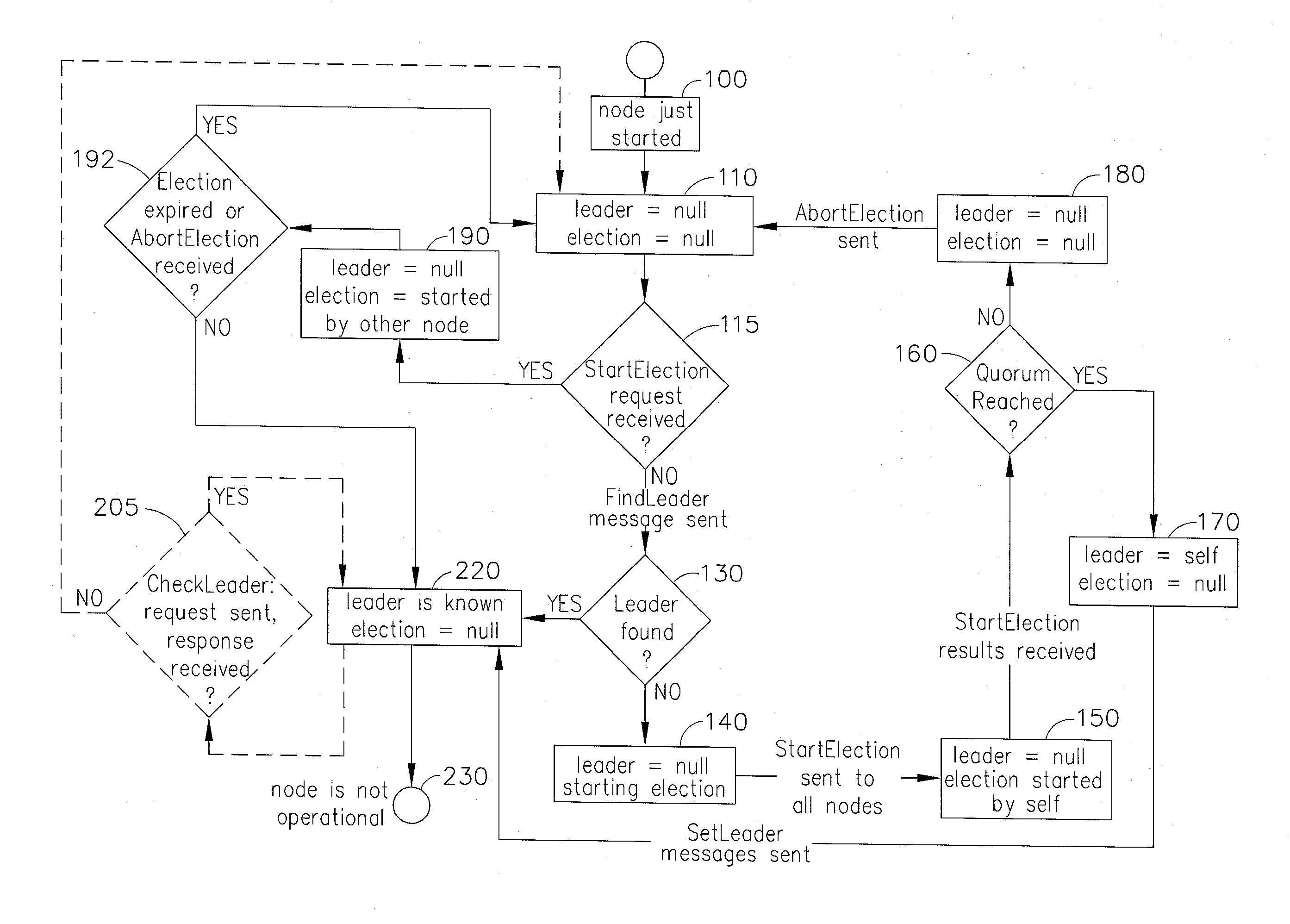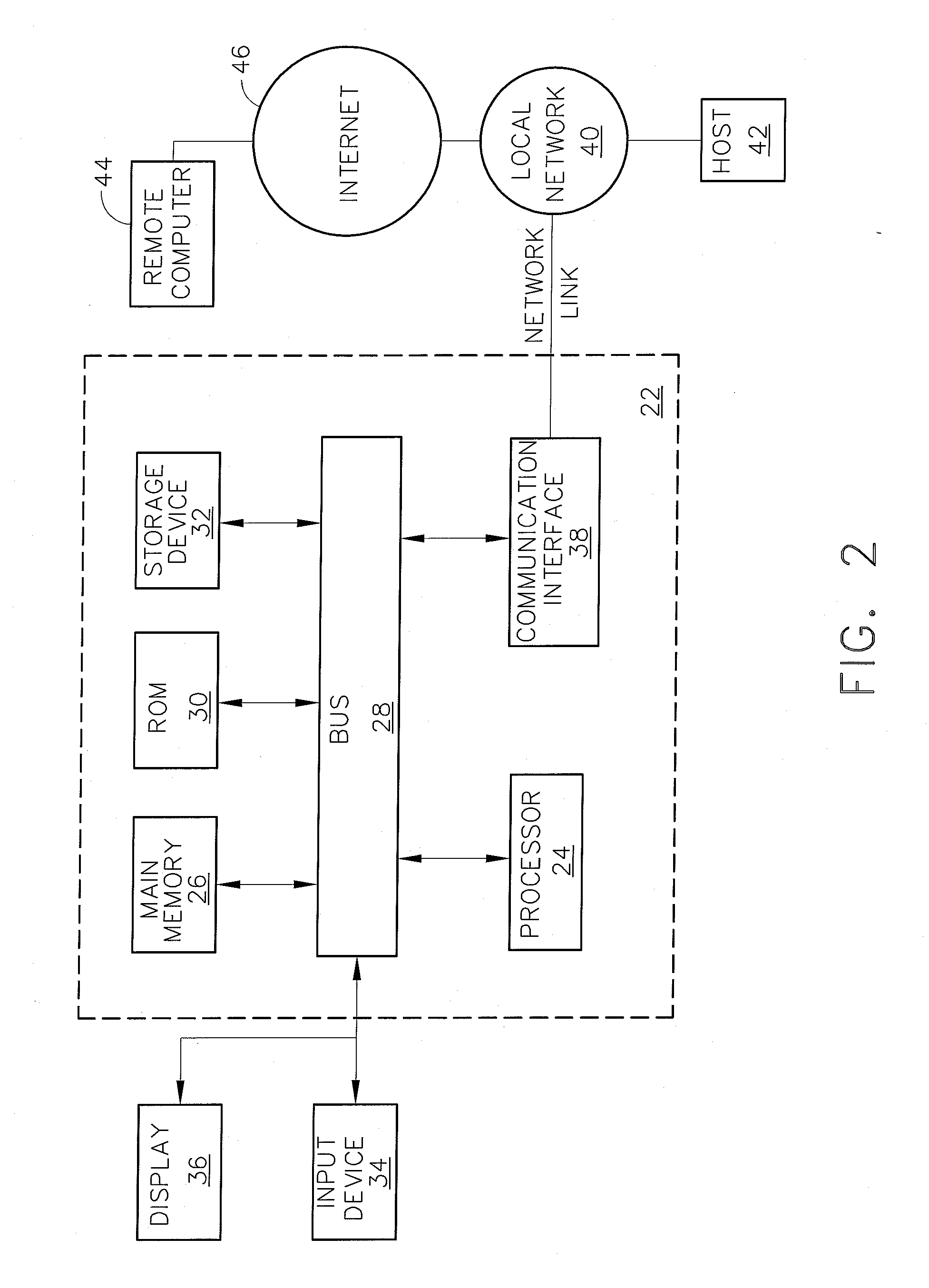Systems and Methods of Providing Fast Leader Elections in Distributed Systems of Simple Topologies
- Summary
- Abstract
- Description
- Claims
- Application Information
AI Technical Summary
Benefits of technology
Problems solved by technology
Method used
Image
Examples
Embodiment Construction
[0016]FIG. 1 illustrates a flowchart of an exemplary embodiment of the systems and methods for operating nodes within a network of computer systems or within multiple processes in a single computer system, to allow fast leader elections in distributed systems of fully connected networks. Substantially every node is initialized at Step 100 at some point in time. After initialization of the exemplary Election Initiator node shown in State 100, the Election Initiator node is unaware of the status of the leadership of the network as shown in State 110, where the local state of the node is leader=null, election=null, meaning that it is not aware of the current leader nor the ongoing election. All nodes start in State 110, or arrive at this state after some state transitions. For example, in exemplary embodiments, as a result of a failed first round of the election process (discussed further herein below), the Election Initiator node will reach the local state “leader=null, election=null”...
PUM
 Login to View More
Login to View More Abstract
Description
Claims
Application Information
 Login to View More
Login to View More - R&D
- Intellectual Property
- Life Sciences
- Materials
- Tech Scout
- Unparalleled Data Quality
- Higher Quality Content
- 60% Fewer Hallucinations
Browse by: Latest US Patents, China's latest patents, Technical Efficacy Thesaurus, Application Domain, Technology Topic, Popular Technical Reports.
© 2025 PatSnap. All rights reserved.Legal|Privacy policy|Modern Slavery Act Transparency Statement|Sitemap|About US| Contact US: help@patsnap.com



